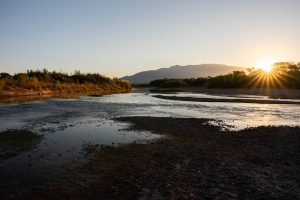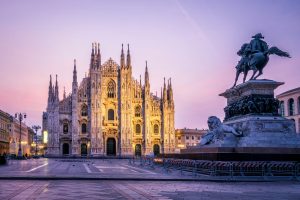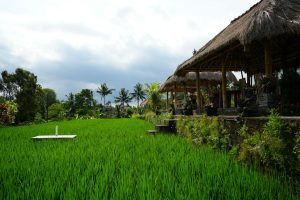
Almost every trip to Peru is focussed on the world renowned archaeological phenomenon that lies in its southern region. And with good reason. The ruins of Machu Picchu inspire a sense of wonder and intrigue in all who step foot on its ancient soil, as images of a mysterious civilisation suddenly become more vivid than imaginable. However, the spectacular Inca ruins are far from the only historical site worth exploring in Peru.
Most who travel to the north of Peru do so in search of the country’s most picturesque coastline around Mancora. There is also untamed natural beauty in abundance when heading inland as the Andes mountain range gives way to the Amazonian jungle. Hidden in this relatively unexplored region of the country are some of Peru’s greatest archaeological treasures. Matching the wondrous experience of Machu Picchu but without the crowds, their baron structures and eery tranquillity make you feel as though you have discovered them for the first time yourself. Here are the five most spectacular historical sites in Northern Peru.
Kuelap
Located 3,000m above sea level, the high altitude location of Kuelpa’s circular stone structures have seen it regularly compared to Machu Picchu. The stone wall defences of the site reach as high as 20m in height in parts, with breathtaking views over the lush greenery of the Andean valleys below which are often shrouded in an ethereal mist. Many of the ruinous buildings have been reclaimed by nature, with all manner of foliage creeping out from between the limestone blocks, giving Kuelap a tangible sense of antiquity that is almost mythical.
The settlement was constructed by the Chachapoya, or “Cloud Warriors”, whose epic cultural remains evidence a society befitting of such a name. Walking amongst the crumbling structures, of which there are over 500, you will see stones with intricate carvings depicting local flora and fauna which give a more immersive insight into the workings and beliefs of the fascinating civilisation that once lived here. Formerly only accessible by a 3 hour hike, the recent completion of a cable car system is forecast to cause a boom in tourism, meaning it would be best to visit Kuelap sooner rather than later.
The Tombs of Revash
To the south of Kuelap, hidden in a natural crevice carved into the side of a dramatic cliff are a collection of what one would assume are small cottages. However, these precariously placed buildings are in fact funerary buildings created by the Chachapoya people who ruled the region until the arrival of Spanish conquistadors in the 16th century. The architectural relics of this ancient civilisation are painted in shades of white and red which have retained their vibrancy to this day, causing them to dramatically stand out from the greys of the cliff and greens of the encroaching foliage.

The graves are thought to have been built for people of great importance, given their comparative opulence to a typical burial at the time. Due to looting over the centuries, the mausoleums were relatively empty when they were rediscovered in the 19th century, but are thought to have once contained treasures that the Chachapoya considered to be of great value. The site is reachable via a 40 minute trek through jungle along a well maintained path before the otherworldly cliff-side visage is revealed in front of you.
Chan Chan
Formerly the largest city in pre-Columbian South America, Chan Chan is now considered one of the greatest examples of how a Chimu city would have operated. Triangular in shape and located in an arid section of coastal desert west of Trujillo, the archaeological site is home to a number of brilliantly preserved ruins, including walls carved with depictions of local wildlife integrated into traditional linear patterning. The adobe remains of this great ancient city merge lifeless desert and urban civilisation in an unimaginable combination. Some of the walls still stand at 18m tall, giving some impression of the city’s former immensity when it was built during the 9th century.

Some of the innovation used in the design of the city is mesmerizingly ahead of its time. This includes an intricate system of canals for irrigation and wall carvings used for improved acoustics, to allow for public speeches to be heard more clearly. The gargantuan significance of this archaeological site was recognised when it was declared a UNESCO World Heritage Site in 1986. Few places in South America offer such a vivid opportunity to step into the land of a civilisation long lost to time.
Huaca de la Luna
On the opposite side of Trujillo is an archaeological discovery that is equally as impressive but in a totally different manner. From the outside, Huaca de la Luna’s beige adobe structure may not seem like much, but within its walls lie some of the best preserved ancient murals on the continent. Tiered walls display a multitude of differing patterns, whose colours have been well maintained due to lack of exposure to the sun. A vibrant depiction of the Moche culture which cultivated parts of Northern Peru’s coastline between 100AD and 700AD, the murals provide an on site treasure whose immaculate preservation is rarely matched by cultural equivalents across the globe.

Considered by archaeologists to have been built for ceremonial and religious purposes, evidence suggests that Huaca de la Luna was used to perform human sacrifice during its prime. A chilling sense of the deaths experienced here can be felt when visiting the site where bodies were later hurled from the Huaca. Beside Huaca de la Luna, travellers can find Huaca del Sol which served as a military base and burial ground for the Moche elite, but unfortunately isn’t open to the public. Those who wish to gain a greater perspective on Moche society should pay a visit to the Museo Huacas de Moche, where artefacts from the two nearby sites are on display.
Carajia
On the cliffs of the Utcubamba Valley looms the eery visage of seven – formerly eight – sarcophagi stood shoulder to shoulder, staring over the valley that they once ruled. Built to represent the human form and up to 2.5m in height, the statuesque coffins are uniquely patterned in shades of red, yellow and white, two of which with human skulls displayed atop their figures’ heads. Examined for the first time in 1985, they remain the largest set of Chachapoyan sarcophagi remaining intact today, despite the eighth figure toppling during an earthquake in 1928.

The exact reason for this ceremony, which in many ways mirrors the Tombs of Revash, is still unknown. However, it is believed that the cliffside placement was an act carried out to prevent looting of the items that the mummies would have had with them at their burial. The intricacy of the sarcophagi and prominence of their position suggests that those inside were people of great importance. The humanoid forms are facing east, meaning that they face the sunrise each morning, considered by some as an attempt to help them in the afterlife. The lifeless ceramic faces’ ominous stare over the ghostly quiet valley 700 feet below is an image that will fascinate and cause chills for any standing below.
Matt Gannan is the CEO and Owner of Tucan Travel. Tucan Travel operate cultural tours in Latin America, Africa and the Middle East, Asia and Europe, as well as tailor-made holidays in Latin America, Africa and Asia.
If you would like to be a guest blogger on A Luxury Travel Blog in order to raise your profile, please contact us.






